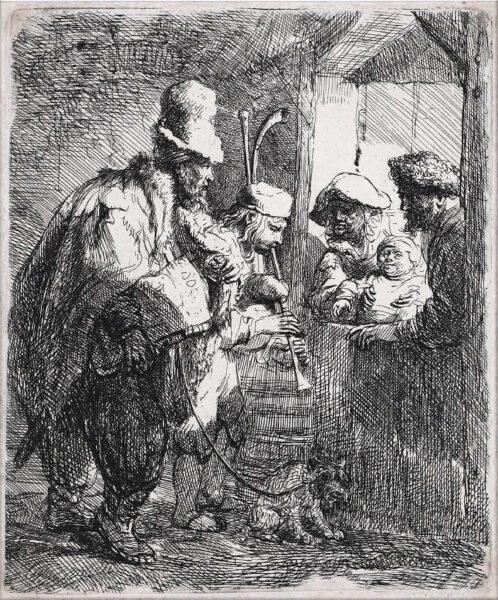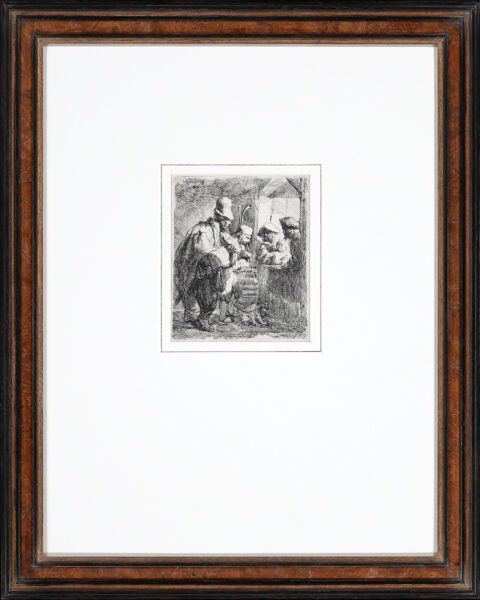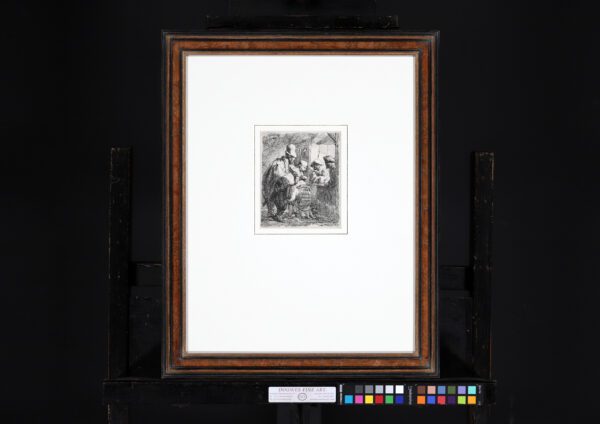“The strolling Musicians”, c. 1635
Etching on laid paper: 14 x 11,5 cm
"*" indicates required fields
Notes
During his lifetime, Rembrandt’s extraordinary skills as a printmaker were the main source of his international fame. Unlike his oil paintings, prints travelled light and were relatively cheap. For this reason, they soon became very popular with collectors not only within but also beyond the borders of the Netherlands.
An old man with a small dog holds a hurdy-gurdy, a stringed instrument played by the turning of a hand-crank, while his younger companion plays a bagpipe. The scene is a traditional one and was depicted by many of Rembrandt’s contemporaries, including Adriaen van Ostade (1610-1685). In the 17th century, travelling musicians were often associated with itinerant beggars, and the figure of the old man resembles other studies Rembrandt made of beggars and peasants. Unlike those of many of his contemporaries, whose depictions of the poor were often moralising or quaint, Rembrandt’s portrayal is characteristically sympathetic. It is an evening scene and the musicians play for a family who have opened their door to listen to the performance. The mother lifts a toddler up to share in the occasion and the child smiles with pleasure. Hearth-light floods through the open doorway, illuminating the faces and upper bodies of the ragged musicians and child indoors, while casting the rest of the scene in shadow. Rembrandt’s use of chiaroscuro heightens the contrast between the cold and dark exterior and the domestic warmth of the interior, which the musicians momentarily share.
Literature
Bartsch 119; White/Boon 119;
The New Hollstein Dutch 141: First state (of III) ;
Nowell-Usticke C2.
Plate in existence at Palace Huis ten Bosch Museum, Nagasaki, Japan.
Provenance
- Emil Schroeter (? – after 1912), Dresden, with the collector’s stamp verso (Lugt 2270);
- Private collection, Bavaria.
- Private collection, Germany
- Private collection, The Netherlands





